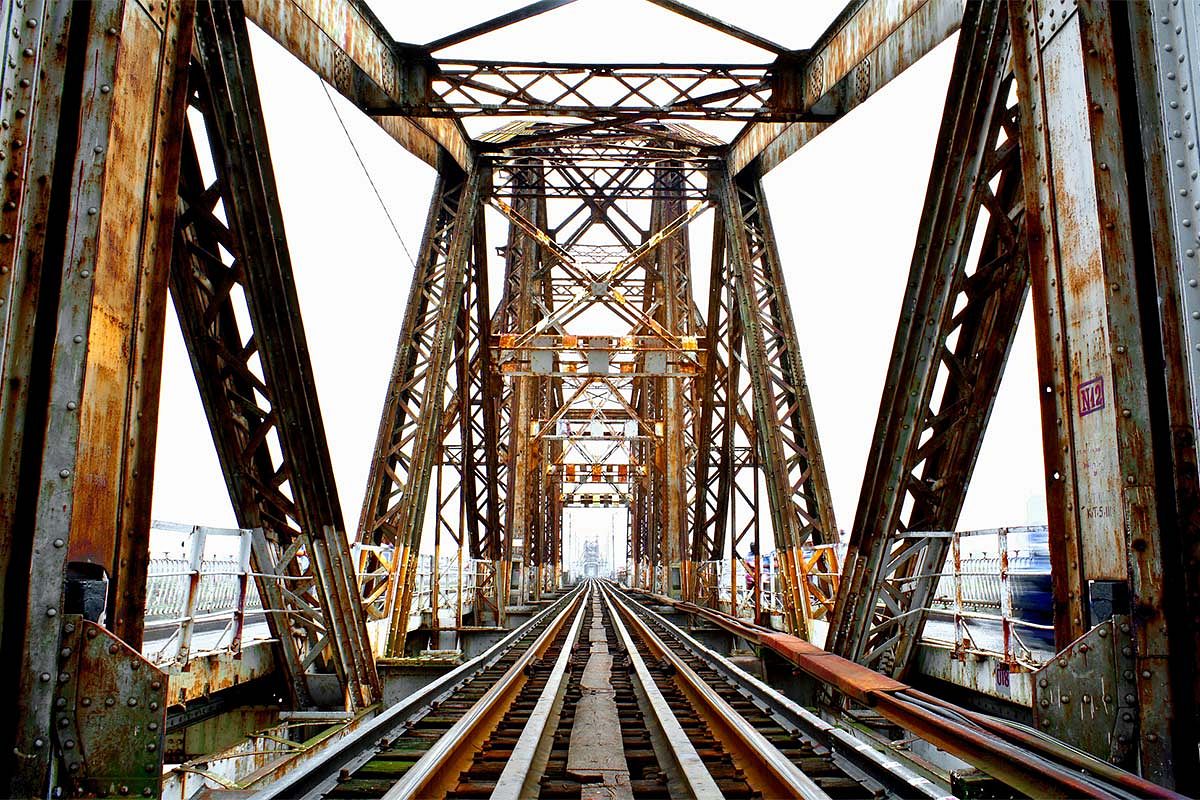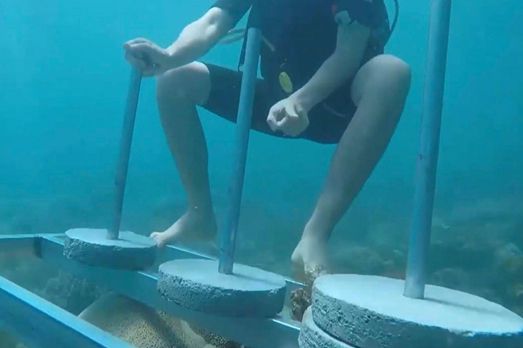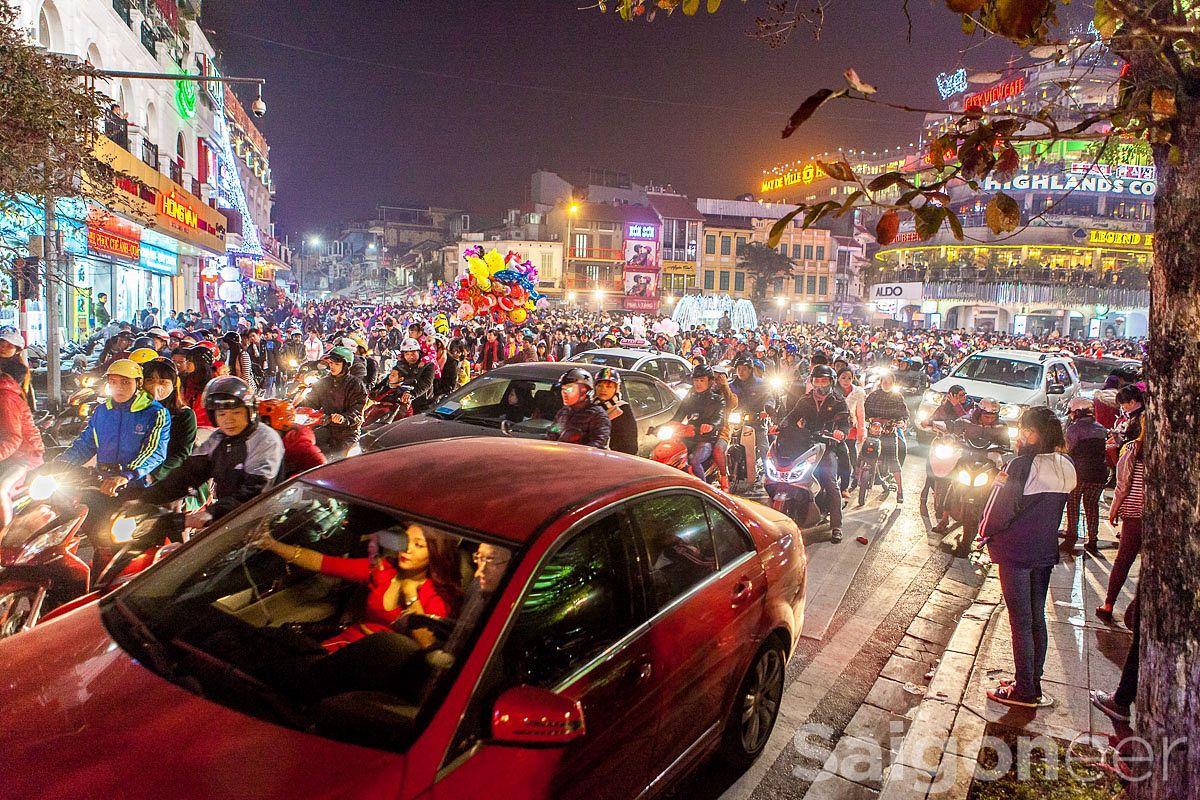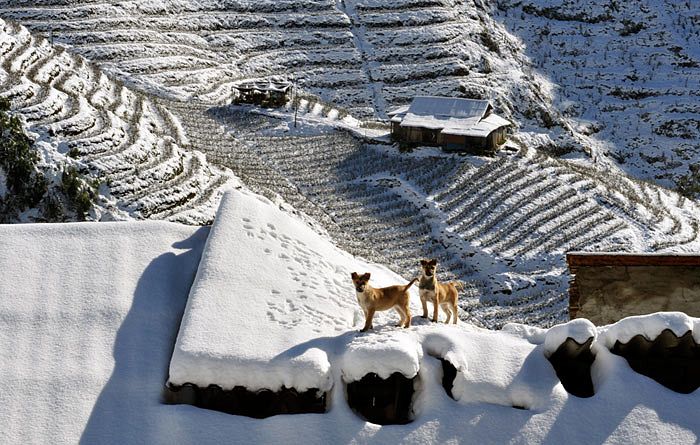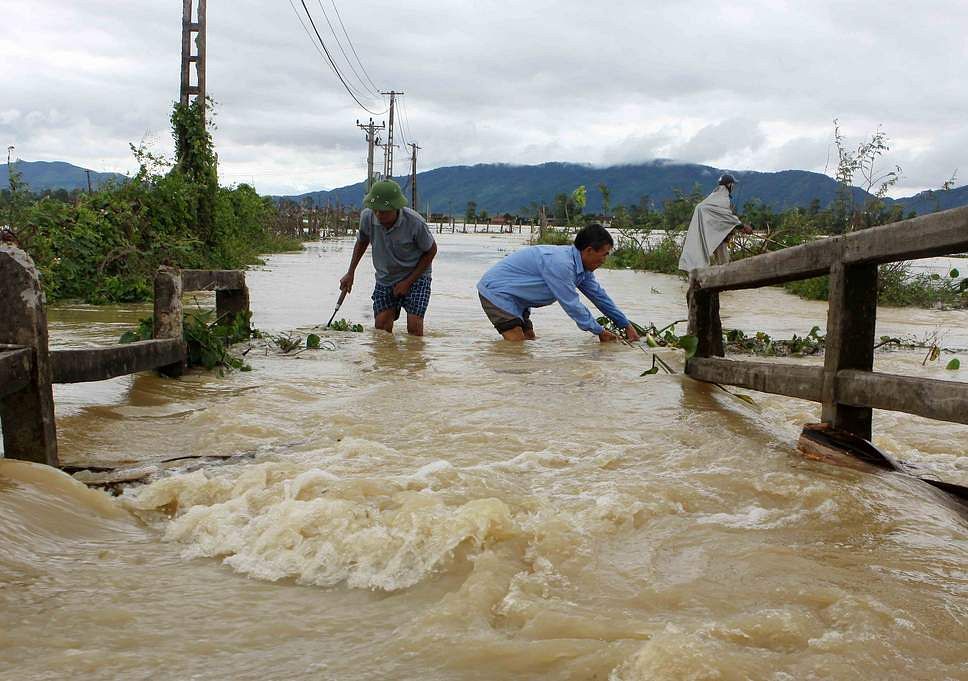It's been a full week since Vietnamese officials found no link between Hung Nghiep Formosa Ha Tinh Steel Company and the mass death of roughly 30 tons of fish, large and small, along a 200-kilometer stretch of Vietnam's central coast. While authorities seem no closer to finding a concrete answer regarding the cause of the fish die-off, there have been a few more developments in the ongoing environmental crisis.
The fish die-off, which began in early April but did not draw national media attention until later in the month, has caused tons upon tons of dead sea life washing up on the shores of Quang Binh, Quang Tri, Ha Tinh and Thua Thien-Hue provinces, reports VnExpress. Near Hue, the outlet says, disposal teams are collecting dead saltwater fish from farmers for VND10,000 per kilogram, a far cry from the VND140,000 – VND240,000 they would have received for healthy fish at the market.

Dead fish on a beach in central Vietnam. Photo via VietnamNet.
At present, Deputy Environment Minister Vo Tuan Nhan's two potential theories – industrial pollution or a harmful algal bloom (HAB), the naturally occurring phenomenon also known as a “red tide” – remain under scrutiny. Various experts have weighed in on these possibilities, some in support of one theory or another and some perplexed by the options presented, however all have called for scientists to further investigate the situation.
While the official cause of the mass fish death remains unknown, things seem to be moving forward, albeit slowly. After issuing an apology for its sluggish response to the crisis, government efforts to get to the bottom of the situation appear to have kicked into a higher gear. On Wednesday, officials announced the formation of a national council to determine the cause of the mass fish deaths, calling upon experts from Vietnam as well as Germany, the United States and Israel to help. In addition, Vietnam has sent water and dead fish samples to Japan, Switzerland and the US for testing.

Deputy Environment Minister Vo Tuan Nhan holds a press conference regarding Formosa's role in the fish die-off on Wednesday, April 27. Photo via Bao Moi.
The following day, Thanh Nien reported the environment ministry's claim to have enlisted 100 scientists to research the seawater along central Vietnam's coast, with the promise of going public with their findings soon.
So far, the outlet says, scientists have crossed disease, oil spills and thermal shock off the list and are now exploring the possibility of biological or chemical substances in the water. Inspectors from the ministry also visited Ha Tinh's Vung Ang economic zone – where Formosa's facilities are located – earlier this week to check in on all companies operating in the area.
After Deputy Environment Minister Nhan's press conference last week declaring no link between Formosa and the fish deaths, officials ordered the company to dig up its wastewater pipe, which feeds into the sea, declaring it illegal, according to Channel News Asia.

Dead fish on the beach in Quang Tri province. Photo via Tuoi Tre.
If experts and government officials are feeling the pressure to get to the bottom of this crisis so, too, is Vietnam's US$7 billion seafood industry. Late last week, officials banned the sale of “non-living aquatic products” from the central region, reports Thanh Nien, dealing another blow to the area's fishermen and fish farmers.
Consumers, meanwhile, are equally frightened, with locals stocking up on fish sauce to prevent from purchasing a contaminated version of the condiment, according to the LA Times, and many abstaining from seafood altogether until more information is made available.
Anxious diners and even beachgoers expressed concern after dead fish were spotted near Da Nang over the previous weekend, however local officials were quick to strike back, going for a swim and chowing down on seafood in an attempt to assuage the public's fears. Hoi An, too, later affirmed the safety of its waters, reports Thanh Nien.

Residents in Quang Binh woke up on Wednesday morning to red seawater. Photo via Thanh Nien.
Meanwhile, in Quang Binh, experts briefly thought they had found the answer when, on Wednesday morning, the sea turned red along a 1.5-kilometer stretch of coast in the same way it might during a HAB, reports VnExpress. However, after dispatching scientists to take samples of the water and sending divers to investigate, experts concluded the phenomenon was not caused by an algal bloom but was perhaps the result of silt entering the ocean instead, as a particularly heavy rain had fallen the day before.
For the moment, locals in Quang Binh – and the three other affected coastal provinces – are encouraged not to swim in or use the seawater until further notice. With no fish to catch and their livelihoods in limbo, the people of central Vietnam – and the country in general – are left with nothing to do but wait.
[Photo via Flickr user Pascal Böhme]


